Section 0: Module Objectives or Competencies
| Course Objective or Competency | Module Objectives or Competency |
|---|---|
| The student will be able to explain the database design process and the database development lifecycle. | The student will be able to explain that the database lifecycle consists of the database initial study, database design, implementation and loading, testing and evaluation, operation, maintenance and evolution. |
Section 1: Database Lifecycle
The database lifecycle consists of six phases:
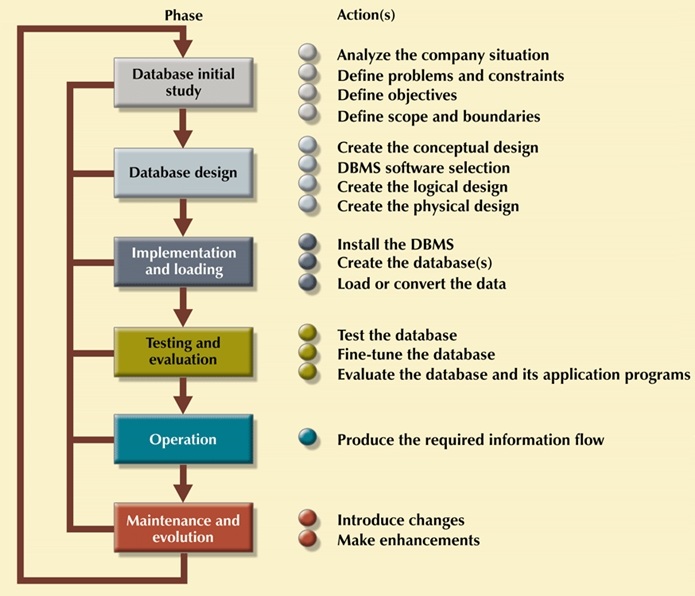
Database Lifecycle
Note that like the systems development lifecycle, the database lifecycle is an iterative process.
Section 2: Database Initial Study
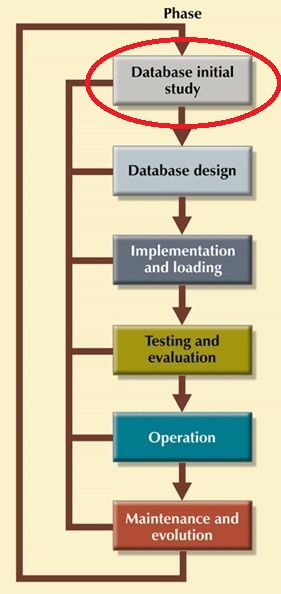
First Step in Lifecycle
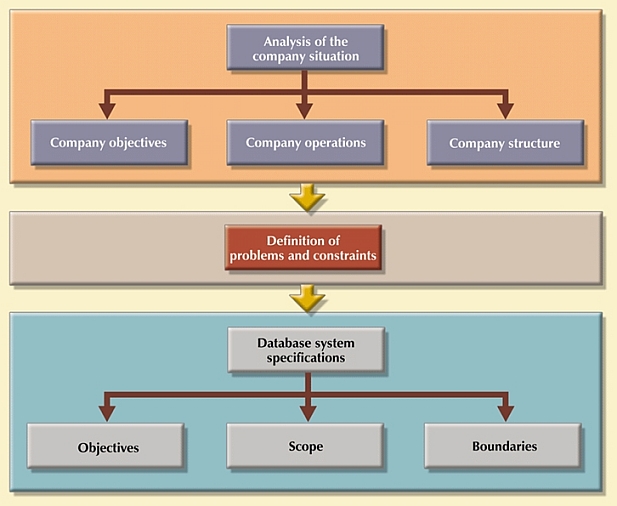
Initial Study Activities
-
Analyze the company situation.
- Determine the company's operational components, how they function, how they interact.
- Keep in mind the interrelatedness and interaction of organizational components.
- Define problems and constraints.
-
Define problems within the larger framework of company operations,
while considering such constraints as
- time
- available budget
- personnel
-
Define problems within the larger framework of company operations,
while considering such constraints as
-
Define the objectives.
- The proposed database design should help solve at least the major problems identified in step 2.
- The objectives, as seen by the designer, must correspond to those envisioned by the end users.
-
The following must be addressed:
- What is the proposed system's initial objective?
- Will the system interface with other existing or future systems in the company?
- Will the system share data with other systems or users?
- Define scope and boundaries.
- The scope defines the extent of the design based on operational requirements.
-
The scope can span
- entire organization
- one or more departments
- one or more functions in a single department
- Boundaries may be imposed by existing hardware and software.
Section 3: Database Design Process
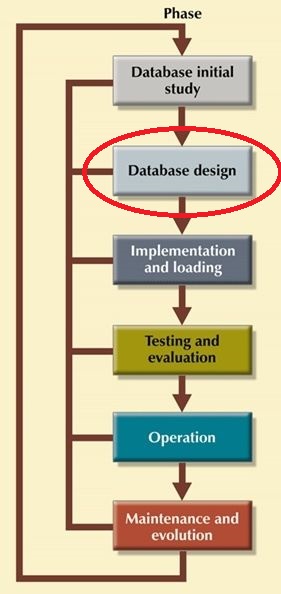
Second Step in Lifecycle
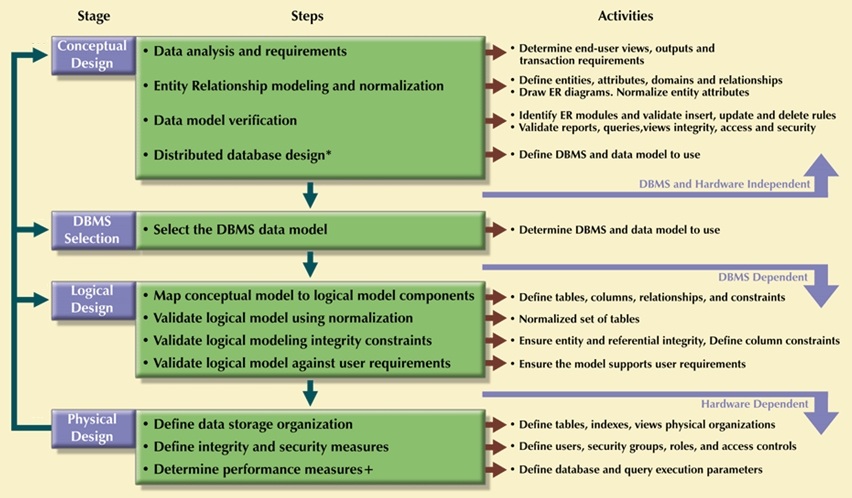
Database Design Process
-
Conceptual design: data modeling is used to create an abstract database structure that
represents real-world objects in the most realistic way possible.
-
Data analysis and requirements gathering focuses on:
- information needs
- information sources
- information constitution
- information users
- developing and gathering end-user data views
- direct observation of the current system
- interfacing with the systems design group
-
E-R modeling and normalization

Developing the Conceptual Model Using ER Diagrams
-
Data model verification requires that the model be run through a series of tests
against:
- end-user data views, required queries and reports
- access paths, security, and concurrency control
- business-imposed data requirements and constraints
- Distributed database design
-
Data analysis and requirements gathering focuses on:
-
DBMS Software Selection
- Careful evaluation of available databases must be made.
- The end user must be made aware of both the DBMS and the database limitations in order to avoid false expectations.
-
Logical Design
- At this point the conceptual design is translated into the internal model for a selected DBMS.
- This involves mapping all objects in the model to specific constructs used by the selected software.
- It also includes the definition of attribute domains as well as the design of tables, indexes, views, transactions, and access authorities (who will be allowed to use the tables and what portions of the tables will be available to which users).
-
Physical Design
- Relational databases are insulated from many physical-layer details.
Section 4: Remaining Steps
The first two steps of Figure 1 (Database Life Cycle) were explained in the preceding sections. This section provides a brief explanation of the remaining steps.
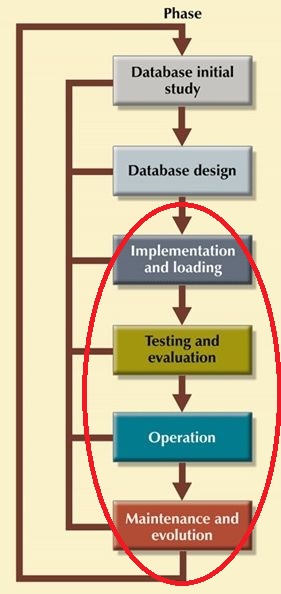
Remaining Steps in Lifecycle
-
Implementation and Loading
- Creation of database
- Loading of data into database
- Addressing performance, security, backup and recovery, integrity, company standards, and concurrency control issues.
- Testing and Evaluation
- Operation
-
Maintenance and Evolution
- Preventive maintenance (backup)
- Corrective maintenance (recovery)
- Adaptive maintenance (enhancement)
- Access permissions
- Database access statistics
- Security audits
- System-usage summaries
It bears repeating that the database life cycle is an iterative process.





